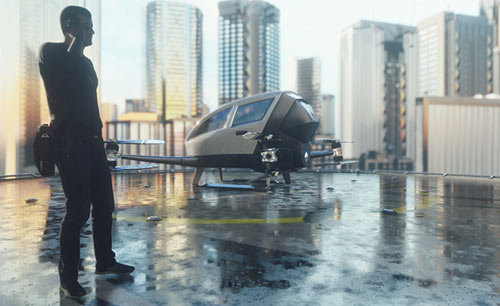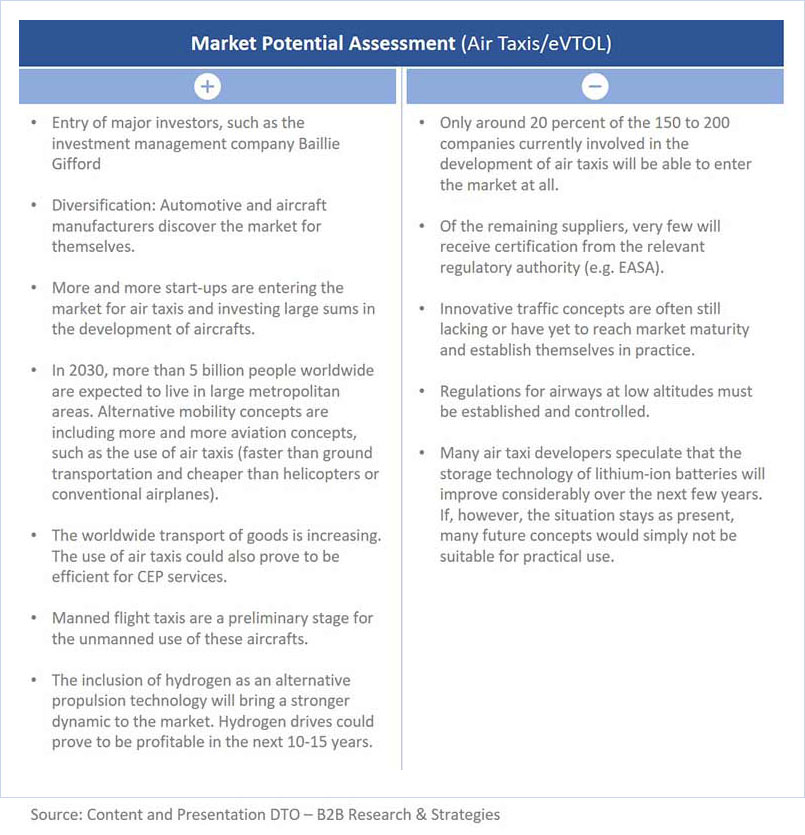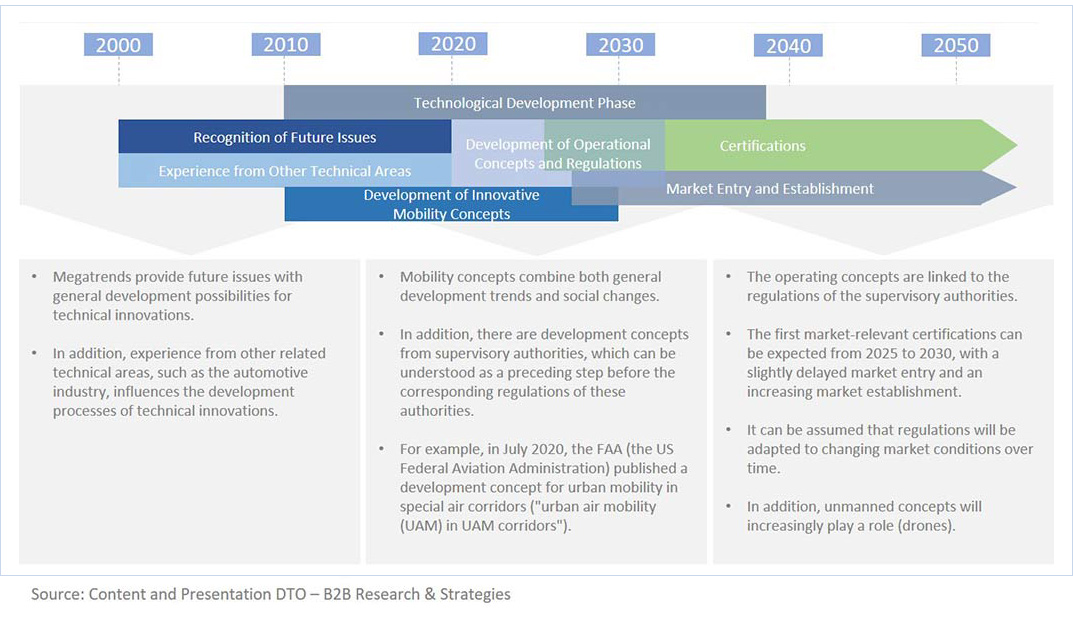
Ready to take off? New mobility concepts are taking shape
"I just saw my air taxi fly right out from under my nose." Looking at current developments in aviation, it is reasonable to say that you could hear such a sentence soon. In recent years, innovative development concepts for the transportation of passengers in short-haul air travel have greatly increased.
Behind every air taxi is a small airplane or aircraft that is supposed to transport people or freight over short distances. In connection with air taxis, one often speaks of so-called (e)VTOL (Vertical Take-Off and Landing). Due to the future-oriented concept and the mostly scheduled use in urban areas, the drive concepts of air taxis consist of hybrid or fully electric based on fuel cell technology (e = electrical). The aircrafts are usually designed for two to five passengers and - as the abbreviation VTOL suggests - can take off and land vertically, which should give them advantages when used in tight spaces and in cities.
A Variety of Suppliers
The marketing concepts of the manufacturers are of a different nature. The key market players are often start-ups that are still in the development phase and have not yet generated revenues from other products, but are subsidized by well-known companies, often from the automotive or aerospace industries.
The list of providers is long. An estimated 150 - 200 companies worldwide are now working on the design of air taxis. While companies like Lilium are focusing less on transport within a city and are instead concentrating on connecting cities and villages without having to invest in expensive transport infrastructure, the Californian company Archer, for example, is focusing more on passenger transport in urban centers.
Extract of Known Development Companies

Every Beginning is Hard
Despite its positive appearance, the market currently still presents a number of hurdles; including legal aspects, safety regulations, as well as technological and social issues. Recently, for example, researchers from the Technical University of Munich and the Technical University of Ingolstadt have outlined a rather negative scenario for the Greater Munich area regarding the rapid deployment of this mean of transport. They assume that air taxis will remain primarily a niche application. The reasons: Air taxis are not aimed at replacing other means of transport, as they exist in parallel with other transport infrastructures. Furthermore, the prices, which are supposed to be in the range of current taxi prices, are set too low for the concepts to be worthwhile.
Taking a look at this market, it seems as if one has invested in a non-existent market under an engineer-driven development compulsion, in the hope that this market will first be established by investments and will then create subsequent demand. This justifiably raises the question: why are a large number of companies then investing in this new market? From DTO’s point of view, when assessing the market potential, several factors that speak either for or against establishing a market should first be considered individually and then brought together again comparatively in order to draw conclusions for the future.

Schematic Time schedule of Market Launch

Where is the journey going?
The use of air taxis will develop differently around the world. While some countries are already working on concrete implementation plans for aviation concepts, other countries and cities will have a much harder time doing so and will not use air taxis by the year 2030. Ultimately, a combination of many conditions must be met for the use of air taxis to not only be possible but also profitable. From a technical point of view, there is also some homework that is still to be done by the developers to ensure that these aircrafts can perform safely and efficiently.
The greatest potential is currently emerging in the Asian region and the Arab Emirates in particular. Countries like Singapore are already making progress in this respect and a deployment of air taxis around the year 2025 seems realistic. The congested city state plans to relieve traffic networks as soon as possible and to increase the quality and speed of transport. For example, the Baden-based aircraft manufacturer Volocopter completed a test flight with their Volocopter 2X in Singapore in October 2019 and is in close consultation with local authorities there. This is a prestige project for Singapore as they are competing with Dubai to be the first country to offer an air taxi in continuous operation.
This being said, a German manufacturer of an air taxi does not necessarily have to travel to faraway Asia to be heard. In 2019, for example, Volocopter and Fraport AG signed a contract in Germany to develop concepts for ground infrastructure and the operation of air taxis and cargo drones at airports. Even if one or the other damper is certainly still to be expected with the market launch of air taxis and even though different world regions will open up to this concept in varying degrees, it is already a market worth billions that will sooner or later gain more momentum.
Would you like more information on this topic or are you in need of a market analysis to clarify how you can enter this future market with your product? If so, please feel free to get in touch with one of our consultants.